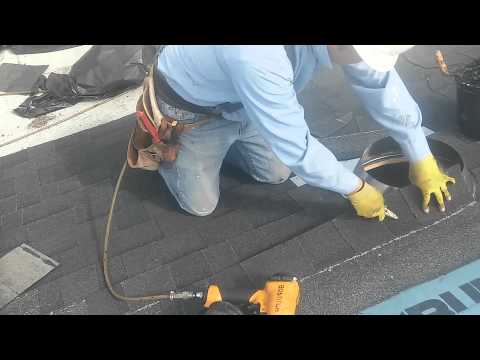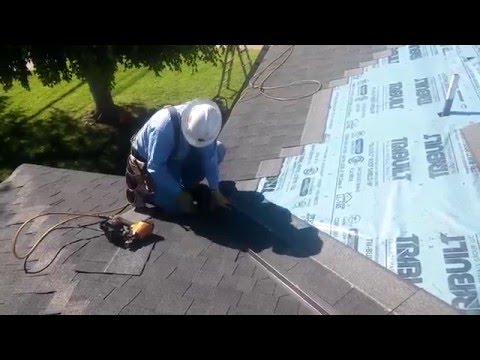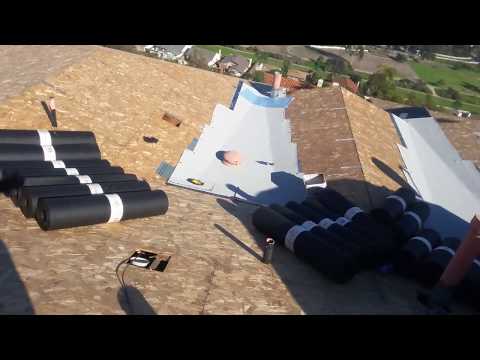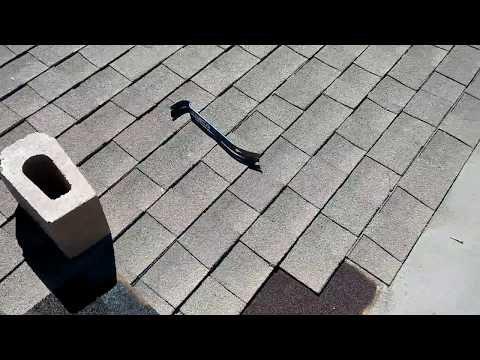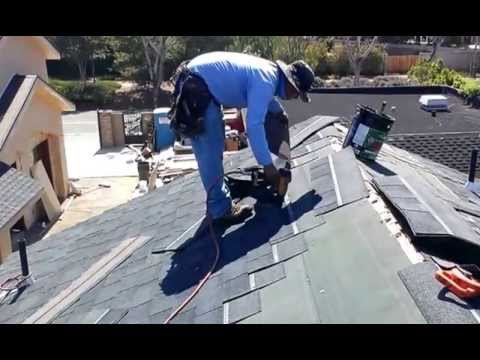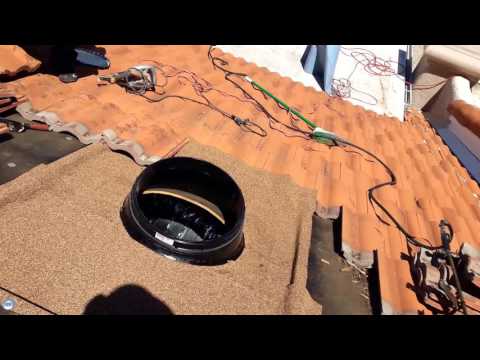Sixteen tips and a few good jokes, too
Because this roof was originally shingled with wooden shakes, the roof is skip sheathed—gapped 1x4, which allow the wooden roofing to dry on both sides. The roof was subsequently covered with asphalt shingles, so when it was time to reroof, it all came off.
Eric Garcia walks us through some production roofing practices with the caveat that
"Whenever you're working somewhere there is snow, you're supposed to use a layer of self-stick membrane ... because the snow usually stays in the valley areas, so you'll have water penetration ...
This is the city of Cypress Calif, we get lucky to have rain four times a year here ... This is not Washington or Oregon. If you live in Canada, or Big Bear, those are different installation codes.
It's not about getting ready for winter. We don't get ready for the winter—when we get ready for the winter it means we're going to go party. Ha, ha, OK guys?"
10 Roof sheathing tips:
- To lay a substrate for new asphalt shingles, Eric advises not to remove the old 1x4s, but instead to overlay new roof sheathing over it. This removes some of the buckles of old roofs.
- Bend the old nails over or pull them and lay new plywood on top.
- Lay the plywood down with minimal nails and then nail it all off at once. "Later when all the plywood is in place, we will have the two guys snapping chalk lines and one guy nailing. So it will take about one hour for one guy to nail the entire house. if you nail everything at once it takes forever. This is the fastest way to do it. "
- When seams do not break on an existing 1x4, add a 1x2 batten (or 1x3 furring strip) to keep seams from sagging.
- Use the gaps in the skip sheathing to build braces for plywood stacks: nail 2x4s into the rafter, perpendicular to the roof slope as a plywood stop. "But do not stack too much plywood."
- Bring a leaf blower for blowing sawdust off the roof sheathing. Sawdust is extremely slippery on a roof and can send a person skidding away in a split second. "Make sure you blow it away. Make sure you are always safe, OK?"
- Do not worry about the end cuts, snap a line after all sheathing is complete and cut all ends at one time.
- Leave 1/8 inch gap between all the sheets.
- Keep plywood back from heater exhaust pipes.
- Tack exhaust ducts to the framing to keep them from falling into the attic.
6 Roof Felt/Paper/Underlayment tips:
- Start at the bottom, work your way up.
- Roll out about ten feet and fasten the top.
- Make sure all nails are pounded down as you roll out the underlayment.
- Cut around penetrations perpendicular to the eave, tuck roofing underlayment under the flashings.
- At the tops of valleys, make a relief cut at 90 degrees to the valley, or about 45 degrees to the felt's edge.
- Drip edge metal goes on after the paper, under the underlayment at the eaves and over the underlayment on the rakes.
—Eric Garcia is a roofing contractor in the LA area who posts a lot of videos to YouTube
